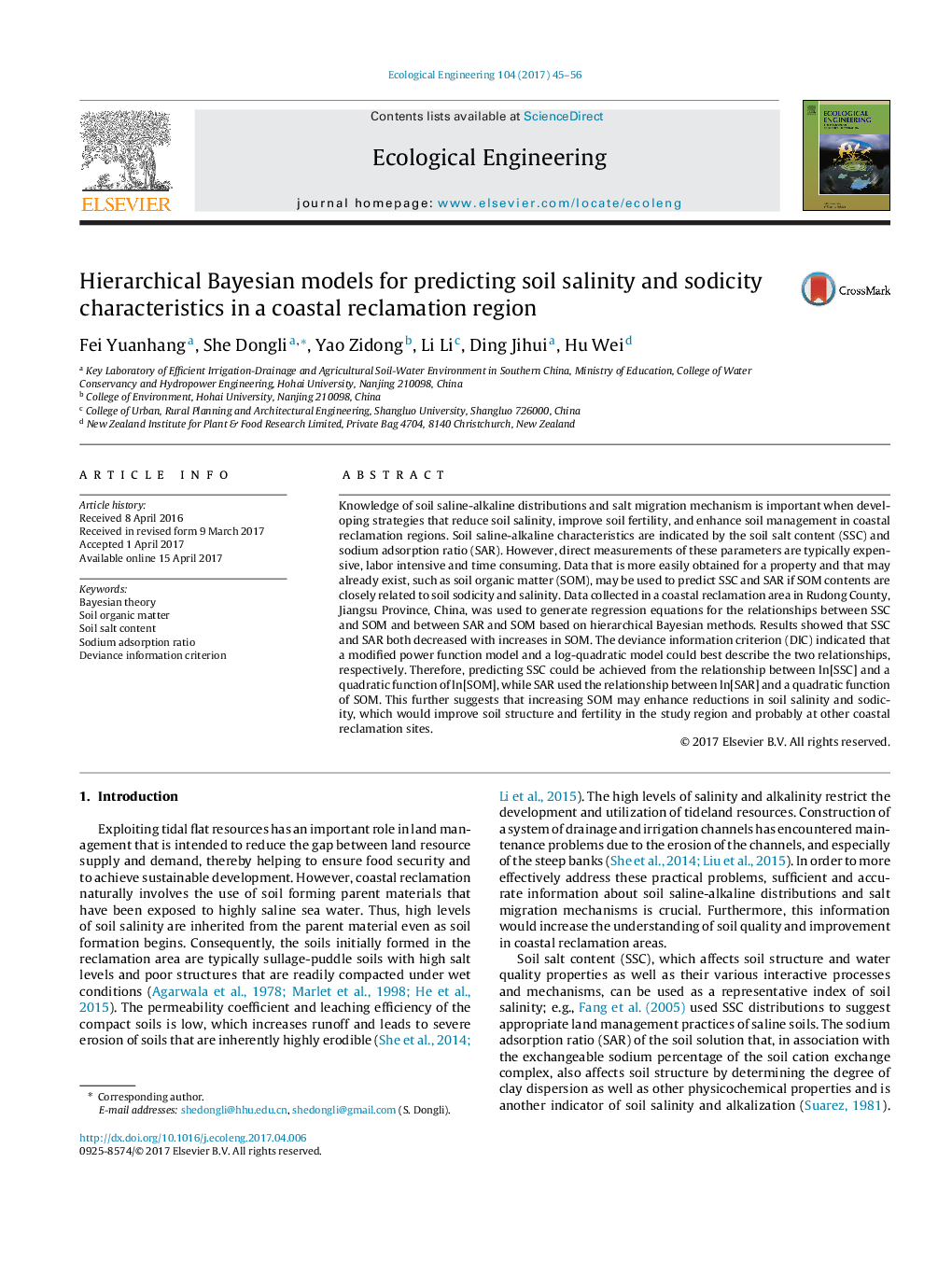| Article ID | Journal | Published Year | Pages | File Type |
|---|---|---|---|---|
| 5743945 | Ecological Engineering | 2017 | 12 Pages |
â¢SSC and SAR decreased with an increase of SOM.â¢Modified power function model was suitable for predicting SSC.â¢Log-quadratic model was suitable for predicting SAR.â¢Increasing SOM may help to reduce soil salinity and sodicity.
Knowledge of soil saline-alkaline distributions and salt migration mechanism is important when developing strategies that reduce soil salinity, improve soil fertility, and enhance soil management in coastal reclamation regions. Soil saline-alkaline characteristics are indicated by the soil salt content (SSC) and sodium adsorption ratio (SAR). However, direct measurements of these parameters are typically expensive, labor intensive and time consuming. Data that is more easily obtained for a property and that may already exist, such as soil organic matter (SOM), may be used to predict SSC and SAR if SOM contents are closely related to soil sodicity and salinity. Data collected in a coastal reclamation area in Rudong County, Jiangsu Province, China, was used to generate regression equations for the relationships between SSC and SOM and between SAR and SOM based on hierarchical Bayesian methods. Results showed that SSC and SAR both decreased with increases in SOM. The deviance information criterion (DIC) indicated that a modified power function model and a log-quadratic model could best describe the two relationships, respectively. Therefore, predicting SSC could be achieved from the relationship between ln[SSC] and a quadratic function of ln[SOM], while SAR used the relationship between ln[SAR] and a quadratic function of SOM. This further suggests that increasing SOM may enhance reductions in soil salinity and sodicity, which would improve soil structure and fertility in the study region and probably at other coastal reclamation sites.
